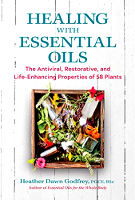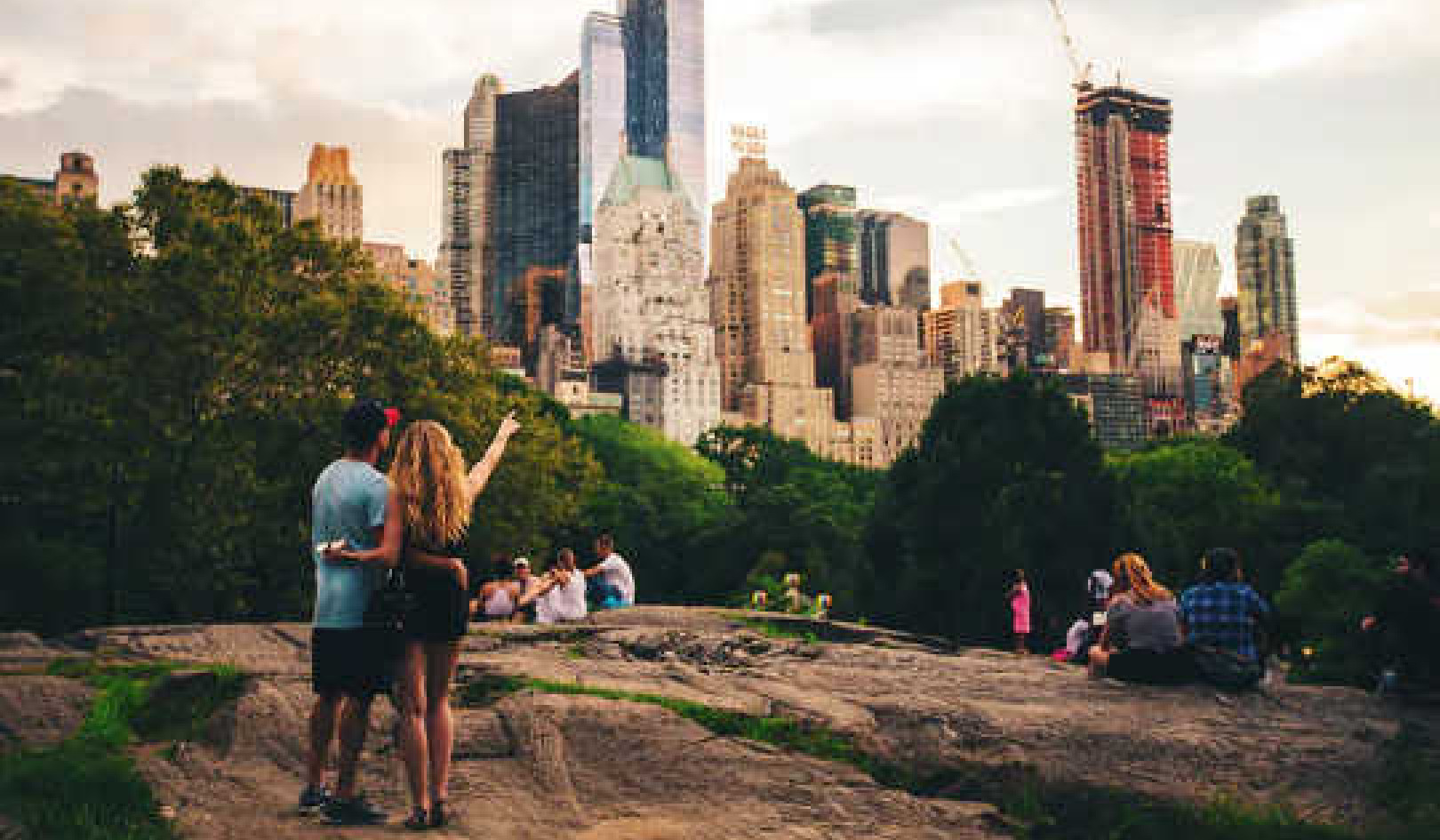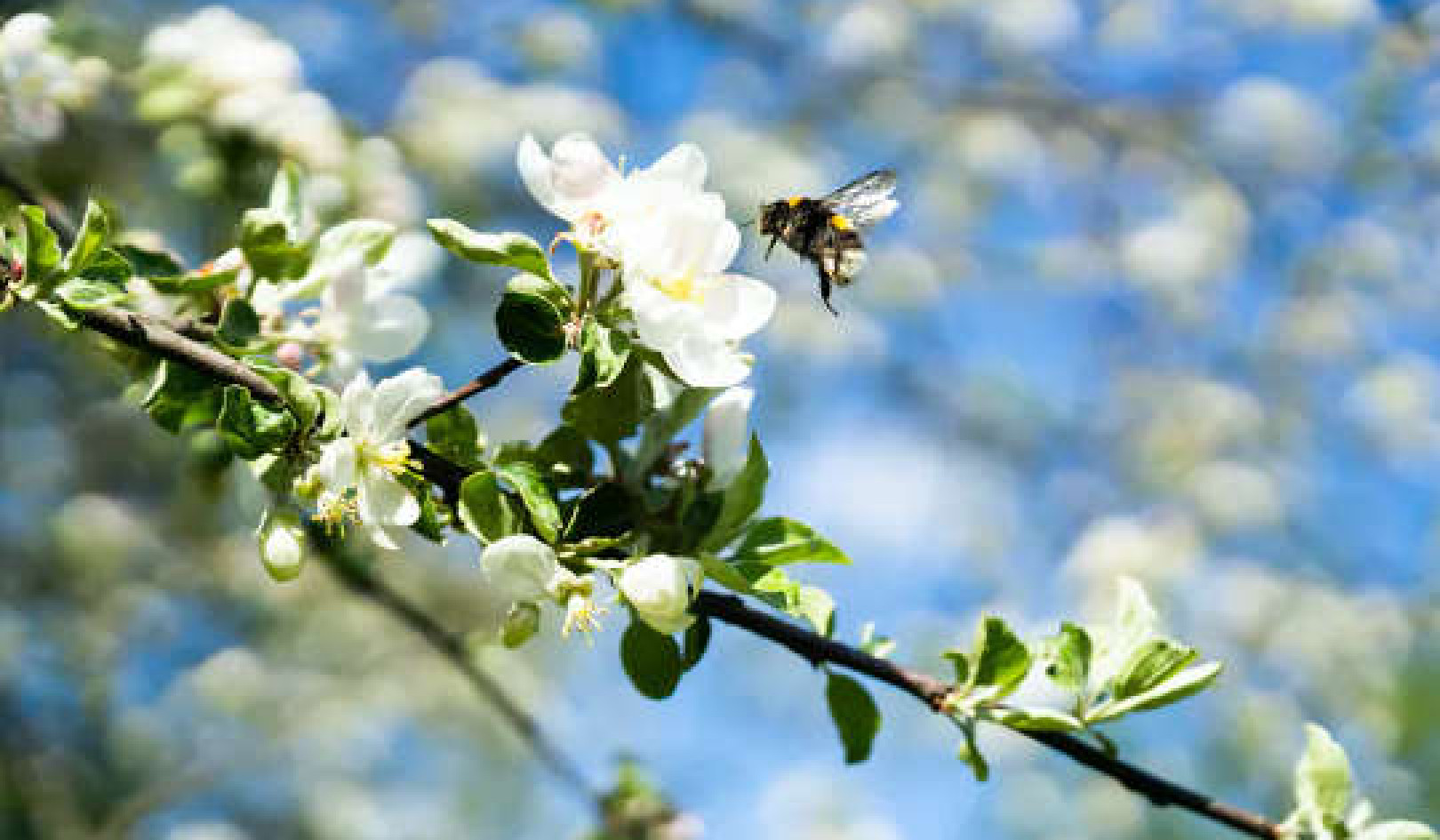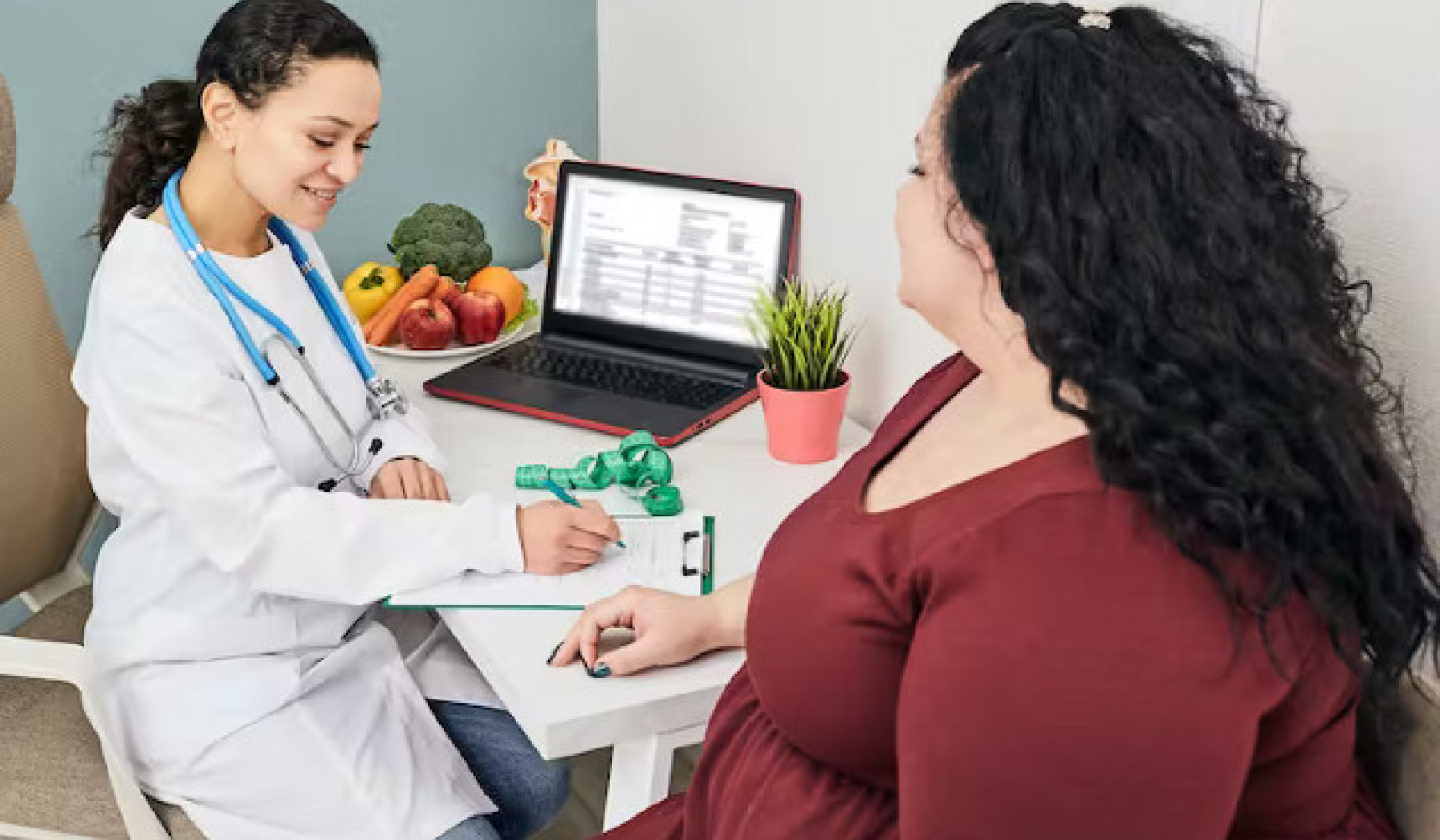
Image by İbrahim Mücahit Yıldız
Great care must be taken when using essential oils around the very young. These same guidelines should also be followed with the elderly and with those who are frail or whose immune systems are severely compromised.
Children are more vulnerable than adults to environmental and topical chemicals (including essential oils), substances, and microbes. A baby’s skin is just one-fifth the thickness of adult skin and does not fully mature until six years of age. Thus the barrier function of infant skin is not fully developed and more susceptible than adult skin to chemical and microbial infiltration, especially at birth and during the first three months of life. Substances easily penetrate surface tissues and quickly pass to the lower layers of the dermis.
Also, while infant skin holds more water than adult skin, this quickly evaporates, so their skin is prone to dryness and is easily irritated. Essential oils can actually exacerbate this process. As well, an infant’s organs of elimination are less capable of processing essential oil molecules, increasing the risk of neurotoxicity.
Pregnant women are similarly susceptible, not only due to increased sensitivity, but also because essential oil molecules cross the placenta and the blood-brain barrier. For this reason my advice is do not apply essential oils, even in dilution, to infants and toddlers under three years old, and most especially, do not use essential oils around babies younger than three months or pregnant women.
Get The Latest By Email
Between three and six years old, certain essential oils can be used topically on young children in very high dilution (1 drop of essential oil in about 7 ounces, or 20 ml, of carrier medium).
Organic Vegetable Oils for Infant Massage and Skin Care
Certain vegetable oils, without added essential oils, can be used as massage oils on babies and young children. These oils protect and soothe the skin and exhibit valuable healing qualities of their own. For example, sunflower oil, massaged into the skin of premature babies three times a day, has been found to enhance barrier function and thus support immunity, with a 41 percent reduction in incidences of sepsis (LeFevre et al. 2010).
Note that massaging babies and infants with oil, lotion, or cream is best done on a mat on the floor rather than on an elevated surface such as a table or bed; wriggliness and slipperiness are not a good combination!
The following oils are safe to use on infants and young children.
Evening Primrose Oil (Oenothera biennis)
Qualities: Evening primrose oil is anti-inflammatory and balances sebum production.
Indications: Eczema and irritated skin
Marigold-Infused Olive Oil (Calendula officinalis and Olea europaea)
Qualities: Calendula is cooling and skin-healing; it soothes skin irritation and soreness and is moisturizing.
Indications: Eczema, dry and damaged skin, diaper rash
Jojoba Oil (Simmondsia chinensis)
Qualities: Jojoba oil is a nonsticky, liquid plant wax that balances sebum production in the skin and improves the quality and appearance of skin, scalp, and hair.
Indications: Irritated skin and dry skin and scalp
Safflower Oil (Carthamus tinctorius)
Qualities: Safflower is rich in fatty acids and absorbs well into the skin.
Indications: Diaper rash
Sunflower Oil (Helianthus annuus)
Qualities: Sunflower is deeply moisturizing and absorbs well into the skin. It blends well with other vegetable oils.
Indications: Good for all-around skin care
Topical Application for Children Aged Three Years and Over
For topical use on young children, dilute 1 drop of essential oil in 7 ounces (20 ml) of olive, evening primrose, jojoba, safflower, or sunflower oil. Select either a single essential oil or a blend of two or three of the following. Use only one drop of this single oil or blend at a time.
Chamomile, Roman (Chamaemelum nobile)
Indications: Eczema, bruises, and dry, itchy skin; aids skin-healing, eases agitation, anger, anxiety, excitability, hyperactivity, insomnia, restlessness; calms and sedates
Application method: 1 drop of essential oil in 7 ounces (20 ml) of carrier oil for massage or skin application; 1 or 2 drops in a room diffuser
Caution: Prone to oxidation if not stored appropriately. Do not apply essential oil neat to skin. Use in moderation. Do not take or administer orally (internally).
Lavender (Lavandula angustifolia)
Indications: Bruises, chapped or cracked skin, eczema; also eases colds and bronchitis; aids immune system; eases agitation, anger, anxiety, insomnia, and panic attacks; balances mood, calms, and sedates
Application method: 1 drop of essential oil in 7 ounces (20 ml) of a carrier oil for massage or skin application; 3 or 4 drops in a room diffuser
Caution: Do not apply neat to children’s skin; do not take or administer orally/internally.
Mandarin (Citrus reticulata)
Indications: Asthma, bronchitis, colds, and coughs; aids immune system; eases anxiety, hyperactivity, insomnia, panic attacks, and restlessness; uplifts mood, calms, and sedates
Application method: 3 or 4 drops of essential oil in a room diffuser
Caution: Mandarin is prone to rapid oxidation if not stored correctly; use within six months of opening the bottle; do not apply neat to child’s skin; do not take or administer orally/
internally.
Young Children: Safety Precautions
• Do not use essential oils on or around babies and children under three years old.
• If used on children over three years old, essential oils must be used in extreme moderation—1 drop of essential oil in 7 ounces (20 ml) of a carrier oil such as sunflower, safflower, jojoba, marigold-infused olive, or evening primrose oil, or an unscented (organic) cream or lotion.
• Do not use herbaceous, spice, or citrus oils (with the exception of mandarin) essential oils, or oils that are strongly scented such as ylang-ylang. The skin and vital organs of babies and young children are still developing, especially the organs of elimination; essential oils are highly concentrated and can easily cause a toxic reaction in the very young.
• Do not put drops of essential oil directly onto pillows due to the risk of eye contact.
• Never apply undiluted essential oil to the skin of a young child (and definitely not a baby), and never add undiluted essential oil to bathwater.
• Never use essential oil for internal consumption by a child of any age.
• Keep essential oils out of the reach of children (good suppliers will provide childproof lids if requested), and keep them away from pets.
• When using around young children, essential oils are best diffused into the environment, away from the child’s head space, to avoid irritation of the airways, to soothe restlessness, and to aid sleep.
Do not use the following essential oils around young children (because they may be toxic or irritating):
• Herbaceous oils and oils extracted from citrusy plants and fruit (with the exception of mandarin in high dilution)
• Oils derived from seeds, herbs, spices, and sensitizing florals such as ylang-ylang
• Oils that contain citral, such as lemongrass and citronella
• Oils that influence the hormonal system, including rose and clary sage
Essential Oil Safety: Storage and Care
Purchase essential oils only from reputable suppliers whose oils are ethically and appropriately sourced, extracted, and handled, and who provide safety data information and details about their chemical composition and source.
Purchase only essential oils stored in amber or dark blue glass bottles with dropper-top lids to ensure careful measurement and prevent spillage or accidental ingestion. Some suppliers place the essential oil–filled glass bottle in an additional canister, or sleeve, that prevents light infiltration; this guarantees the essential oil is protected from UV light.
Check the sell-by date before using and make a note of the date of purchase. Essential oils oxidize rapidly when exposed to oxygen in the atmosphere and UV light, and therefore they have a limited shelf life—two years if unopened, one year once opened (citrus oils, such as mandarin or lemon, will keep for only six months once opened). Pine oils and other oils with a high terpene content oxidize rapidly.
Discard the small amounts of essential oil left in a bottle or container unless rapidly used up from the moment of first opening the bottle. Note: Do not flush residue or old, unused essential oils down the sink or toilet, as their oxidized chemicals can be toxic to fish and the local aquatic microbiome.
Place the lid back on the bottle immediately after using to slow oxidation.
Never top off a bottle of essential oil with more essential oil once it has been opened for use.
Always store essential oils in a cool, dark place, away from sources of heat and direct sunlight to protect the oils from rapid oxidation, which is exacerbated by light, heat, and atmospheric oxygen. A fridge is preferable for many essential oils (although some oils, such as rose otto, will solidify when very cold, but do return to a liquid state at room temperature).
Application of Essential Oils
Do not apply essential oils neat on the skin; always dilute in a vegetable oil or unscented lotion or cream (for example, 1 or 2 drops of essential oil to 0.17 ounce, or 5 ml, of vegetable oil). Undiluted dermal application of essential oils can lead to irritation and sensitization. Lavender and tea tree essential oils are the exception to this rule; they are often used as a first-aid remedy for insect stings, minor burns, skin abrasions, or mild skin infections. Note that repeated long-term topical application of these oils is not advisable due to the risk of sensitization.
Do not swallow or take essential oils internally (see “Accidents and Reactions,” below).
To avoid sensitization, do not use the same essential oil or blend of essential oils repeatedly. Take breaks from use (every two or three weeks), and vary the essential oils you use if applying them over a long period. Also, use limited quantities—no more than six drops daily. Essential oils are highly concentrated, and very small amounts are quite effective.
Always make sure that the essential oils you select are compatible with your requirements and are otherwise not contraindicated. This is especially important if you are taking prescription medication such as painkillers like codeine or other opiate derivatives or blood-thinning medications.
Wipe up any spillages immediately; essential oils will dissolve or damage polystyrene, plastic, varnish, paint, and polished and laminated surfaces.
Accidents and Reactions
✦ Accidental ingestion: Do not induce vomiting. Drink full-fat milk. Seek medical advice immediately. Keep the bottle the essential oil was stored in for identification; the label should display the Latin name, batch number, sell-by date, etc.; the bottle will have traces of the oil.
✦ Eyes: Essential oils can be transferred from your fingers to your eyes, so always wash your hands thoroughly after using or handling. If neat essential oil enters your eyes, immediately flush with vegetable oil or full-fat milk, then rinse thoroughly with clean, warm water. Sometimes diluted essential oils enter the eyes during steam inhalation, bathing, or showering. If this happens, immediately flush eyes with clean, warm water. In either case, seek medical advice right away if irritation or stinging persists after flushing the eye(s).
✦ Skin reaction: Apply vegetable oil to dilute the essential oil on the skin, then thoroughly wash the area with unscented soap (liquid if possible) and rinse with warm water to remove any trace of soap and the essential oil. Dry the area thoroughly and apply an unscented base cream (a vegetable oil or even butter if nothing else is available) to soothe the irritation.
Measuring Essential Oils
✦ 5 ml = 100 drops of essential oil
✦ 10 ml = 200 drops of essential oil
✦ Maximum amount of essential oil per twenty-four-hour period, including direct inhalation and topical use: 6 to 10 drops for a healthy adult
✦ Apply for two to three weeks only, followed by one week’s abstinence, and change essential oil(s) selection regularly.
✦ Carrier medium: vegetable oils or unscented creams, lotions, ointments, and gels
✦ 1 drop of essential oil per 5 ml of carrier medium = 1% blend
✦ 2½ drops of essential oil in 5 ml of carrier medium = 2.5% blend (round down or up, i.e., 2 or 3 drops)
✦ 5 drops of essential oil in 5 ml of carrier medium = 5% blend
Appropriate Quantities
As noted previously, reduce the amount of essential oil used on young children (over three years old), the elderly, and adults with sensitivities. Use the maximum dilution (1 drop of essential oil in 20ml vegetable oil or unscented cream or lotion) on children over three years old, anddo not use herbaceous, spicy, or citrus oils on young children. Always make sure the genuine purity of your essential oil before applying—100 percent pure, unadulterated essential oil purchased from a reputable supplier who provides relevant safety information.
The following amounts are appropriate for children, for those who are frail or elderly, and for those with sensitivities, allergies, eczema, or asthma, as well as for facial blends.
✦ 1 drop of essential oil in 5 ml of carrier medium = 1% blend
✦ 2 drops of essential oil in 10 ml of carrier medium = 1% blend
✦ 1 drop of essential oil in 10 ml of carrier medium = 0.5% blend
✦ 2 drops of essential oil in 20 ml of carrier medium = 0.5% blend
✦ 1 drop of essential oil in 20 ml of carrier medium = 0.25% blend (for children three years or older)
The normal amount for general adult use:
✦ 2½ drops of essential oil in 5 ml of carrier medium = 2.5% blend (rounded up or down)
✦ 5 drops of essential oil in 10 ml of carrier medium = 2.5% blend
✦ 5 drops of essential oil in 5 ml of carrier medium = 5% blend
✦ 10 drops of essential oil in 10 ml of carrier medium = 5% blend
Copyright 2022. All Rights Reserved.
Printed with permission.
Article Source
BOOK: Healing with Essential Oils
Healing with Essential Oils: The Antiviral, Restorative, and Life-Enhancing Properties of 58 Plants
by Heather Dawn Godfrey PGCE BSc Presenting an accessible yet scientifically based guide to healing with essential oils, this book provides a must-have reference for those who use essential oils at home, for health and well-being practitioners, for scent artists and blend creators, or for anyone wanting to explore the dynamic qualities of essential oils for themselves.
Presenting an accessible yet scientifically based guide to healing with essential oils, this book provides a must-have reference for those who use essential oils at home, for health and well-being practitioners, for scent artists and blend creators, or for anyone wanting to explore the dynamic qualities of essential oils for themselves.
For more info and/or to order this book, click here. Also available as a Kindle edition.
About the Author
 Heather Dawn Godfrey, PGCE, BSc, is an aromatherapist, fellow of the International Federation of Aromatherapists, and an aromatherapy teacher. She has published a number of articles and research papers exploring the benefits of essential oils. She is also the author of Essential Oils for the Whole Body and Essential Oils for Mindfulness and Meditation.
Heather Dawn Godfrey, PGCE, BSc, is an aromatherapist, fellow of the International Federation of Aromatherapists, and an aromatherapy teacher. She has published a number of articles and research papers exploring the benefits of essential oils. She is also the author of Essential Oils for the Whole Body and Essential Oils for Mindfulness and Meditation.
Visit her website at: aromantique.co.uk
More books by this Author.








